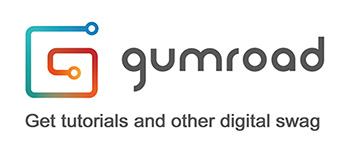While I agree to most statements of both about the things in an art career that can happen, there are a few things that made me think and since they don´t respond to comments on youtube, I write them down on my own blog to not have them buried and unanswered in a ton of other unanswered comments.
Which is the first thing to note, they both are eager to stay in touch with their fans and nurture their tribes, but commenting back on youtube isn´t possible- for that there is the tick-box to disable comments, easy as that in my opinion.
The problem with quitting freelance
My real shout goes out to the matter of quitting freelance business to get ground with a personal art-career that Noah is pursuing right now. Nothing against that, wishing the most of luck to anyone with a similar path ahead. Most of us have to do that besides any other job, be it a job in the factory or like I do, freelance illustration.
The reason I prefer doing freelance illustration over any other dayjob such as working at Starbucks for example as they recommend, is that I have done that for over 10 years and you guess what? It sucks.
What I love about doing freelance illustration is to find visual solutions, the problem-solving-part is what makes my day.
When doing freelance I sure have to do what others want and I love to collaborate and work on these illustrations and yes, that involves to have others tell me how they want to have something. This helped me a lot to get objective with my own work to get a better distance to learn what is necessary, which change makes a difference and best of all, it helped to get not too emotionally attached to my work, a priceless lesson that I wouldn´t have learned otherwise. In other words; I get paid to learn.
Teaching in an institute vs. your own school
I´m a lecturer at an art institute in Germany, the IBKK; sure there are now more than ever possibilities to get your own courses together, but that´s what I can do too with the difference that I have a "real" class with real students face-to-face and it makes lessons so much easier. Preparing an online course is hard work and what both Noah and Chris forget to mention is it sucks up immense time of yours to get a professional website running, software packages for virtual classrooms if you don´t want to depend on a public stream to set yourself apart. Also the promotion work, the leg-work sucks up at least 50% of the time.
Passion Projects
Focusing on your own projects is nice, I do that in my spare time too and I have around 4 different series /projects to chase besides my "dayjob" which keep me sane. On the other hand, I can´t imagine just doing them or pursuing a career path just in art and promoting this because that would suck me dry in the shortest amount of time. Even worse if a gallery would be involved, creating art would be like working on the frontline assembly -again, no thanks.
It isn´t even about the savings he might have to get this career working, even if he got the numbers right and have savings of up to 30k lying around to fill the gap of nearly a year of no income, what about shows and art conventions? Shows, especially exhibition space on cons like SDCC are ridiculously expensive, count 5k and more, add three shows of that size and you have just 15k left to cover expenses, very shortsighted in my eyes, because a following isn´t jsut made in one years appearance of such conventions it is done over a long period of time.
Traditional vs- Digital art
It is also nice to pursue a career doing oil paintings and selling them, but first you need a market for that. The market is getting bigger but also the competition is getting bigger and selling personal works on oil can bring more than selling some prints, but, when they are gone, they are gone and even if 2,5k for a painting sounds much, in 10 years from now it probably sounds ridiculous but then, there´s no way back, especially bitter if you are emotionally attached to your work.
This should not mean I´m not emotionally connected to my work, but the thing is that I really like to be flexible on how I want to display my work and to whom I want to give it.
Traditional work doesn´t allow me such a flexibility and I also have no market for traditional works, so I don´t waste time pursuing what isn´t working for me, but that doesn´t mean it will not work for others.
The essence i pretty much that in the video-talk is very much potential stuff, it depends on you if you use this and how.
1000 true fans vs. 1000 weak ties
The 1000 true fans approach for example by Kevin Kelley that Noah mentioned, is also nice, but excluded a bit of reality. Because to get 1000 true fans you need at least 100k passersby that catch interest in your work, just 50k of these take a closer look and walk away just 5000 take your card, but they probably don´t get back to you,only 1000 of them are following your work somewhere on the web or start to do so, just 50 of these buy a postcard or two and then theres these 20 people who express interest in buying a poster but only 10 of them actually buy something -there you have 10 people who are eager to give you $20, not $100, if you´re lucky there´s that 1 person who is eager to give you more than $100 for a canvas print - but I would not count on it.
This brings the numbers on Kevins Kelley´s blog down to reality.
There´s for sure some room for up´s and down´s but that´s it. And btw. there´s no social media or internet calculated in this break-even. Just consumer events like conventions where people are more eager to give you their money. Real-life cirumstances such as everyday life is even more difficult to convince people and don´t count on social media, if it´s not free, people walk away. Nice if you have 7k followers on facebook, did anyone of them gave you something? Do the math, it is just 1 percent of them that have bought something, you can calculate how many you have to go to get the "true 1000 fans" on facebook.
Also not in this 1000 fans theorie included is the importance of weak ties. I´d even go as far as saying that 1000 weak ties are even more important than 1000 true fans. Because the weak ties spread the word when you least expect it, they are not so emotionally connected, but they like you and probably don´t monetize your work, but they can help you with other things not even possible to render in money.
I could go on about that topic, but that´s enough ranting for today.


















Really good read, it's nice hearing an opposing view. I think you make a really good point about the 'true' fans vs. weak ties.
ReplyDeleteThank you very much for the comment, glad you think so.
Delete